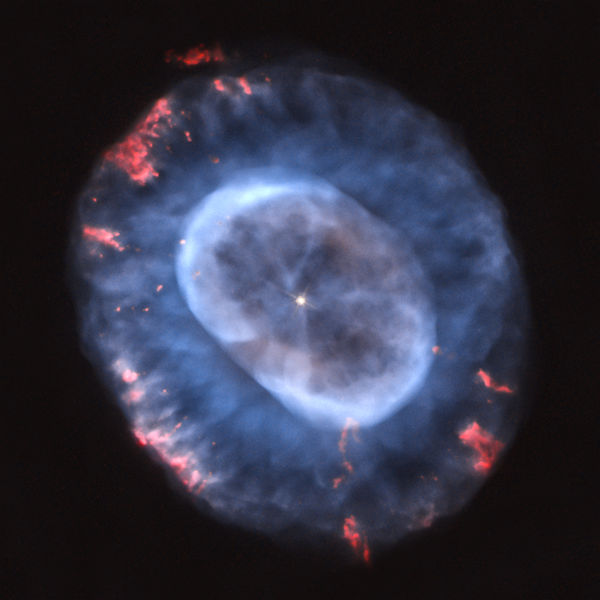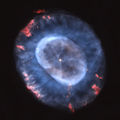V sobotu 2. listopadu proběhla mohutná oslava naší plnoletosti !!
Multimediaexpo.cz je již 18 let na českém internetu !!
V tiskové zprávě k 18. narozeninám brzy najdete nové a zásadní informace.
Multimediaexpo.cz je již 18 let na českém internetu !!
V tiskové zprávě k 18. narozeninám brzy najdete nové a zásadní informace.
Soubor:Caldwell 22.jpg
Z Multimediaexpo.cz

Velikost tohoto náhledu je: 600 × 600 pixelů
Obrázek ve vyšším rozlišení (rozměr: 1 800 × 1 800 pixelů, velikost souboru: 1,34 MB, MIME typ: image/jpeg)
Fotografie + Description:
- English: Caldwell 22, also cataloged as NGC 7662 and nicknamed the Snowball Nebula or Blue Snowball Nebula, is a planetary nebula located about 2,500 light-years from Earth. Nebulas like these represent a stage in evolution that stars like our Sun undergo when they run out of fuel. Stars are nuclear furnaces that spend most of their lives fusing hydrogen into helium. Massive stars have fiery fates, exploding as supernovae, but medium-mass stars like the Sun swell to become red giants as they exhaust their fuel.
- The process begins when, after billions of years of nuclear fusion, the star starts to shut down. Gravity (no longer balanced by the outward pressure created by nuclear fusion) compresses the stellar core. The star’s outer layers of gas puff away into space, creating a planetary nebula (so named because these objects often resemble planetary orbs when viewed through a small telescope). At the center lie the remains of the original star’s compressed core, a small white dwarf. One day the Sun will meet a similar fate, but it has enough fuel to last another 6 billion years or so.
- This image was taken using Hubble’s Wide Field and Planetary Camera 2 in 2000. Astronomers compared this image to earlier Hubble images of Caldwell 22 to study how the nebula expanded and changed.
- Caldwell 22 was discovered by astronomer William Herschel in 1784. It is located in the constellation Andromeda and has a magnitude of 8.3. The nebula is well placed for observing in autumn night skies from the Northern Hemisphere. In the Southern Hemisphere, look for it low in northern skies in the spring. The nebula can be viewed in telescopes of all sizes, but it might be mistaken for a star at low magnification. Higher magnifications will better distinguish the nebula. A medium-sized telescope shows Caldwell 22 well, but the nebula’s central star will remain hidden from all but the largest telescopes.
- Credit: NASA, ESA and A. Hajian (University of Waterloo)
- For more information about Hubble’s observations of Caldwell 22, see:
- chandra.harvard.edu/photo/2012/pne/
- For Hubble's Caldwell catalog site and information on how to find these objects in the night sky, visit:
- www.nasa.gov/content/goddard/hubble-s-caldwell-catalog
- Date: 19 July 2012, 10:26:54
- Source: Flickr.com
- Author: NASA Hubble
+ pochází z Wikimedia Commons, kde má status – This file is licensed under the Creative Commons Attribution 2.0 Generic license. (CC BY 2.0)
FLICKR – https://www.flickr.com/photos/nasahubble/49096705147/
Historie souboru
Kliknutím na datum a čas se zobrazí tehdejší verze souboru.
| Datum a čas | Náhled | Rozměry | Uživatel | Komentář | |
|---|---|---|---|---|---|
| současná | 30. 8. 2020, 09:05 |  | 1 800×1 800 (1,34 MB) | Sysop (diskuse | příspěvky) | (Fotografie + ) |
- Editovat tento soubor v externím programu (Více informací najdete v nápovědě pro nastavení.)
Odkazy na soubor
Na soubor odkazuje tato stránka:
